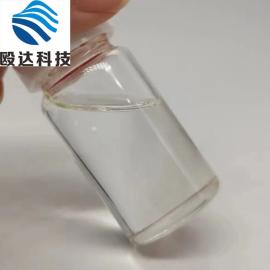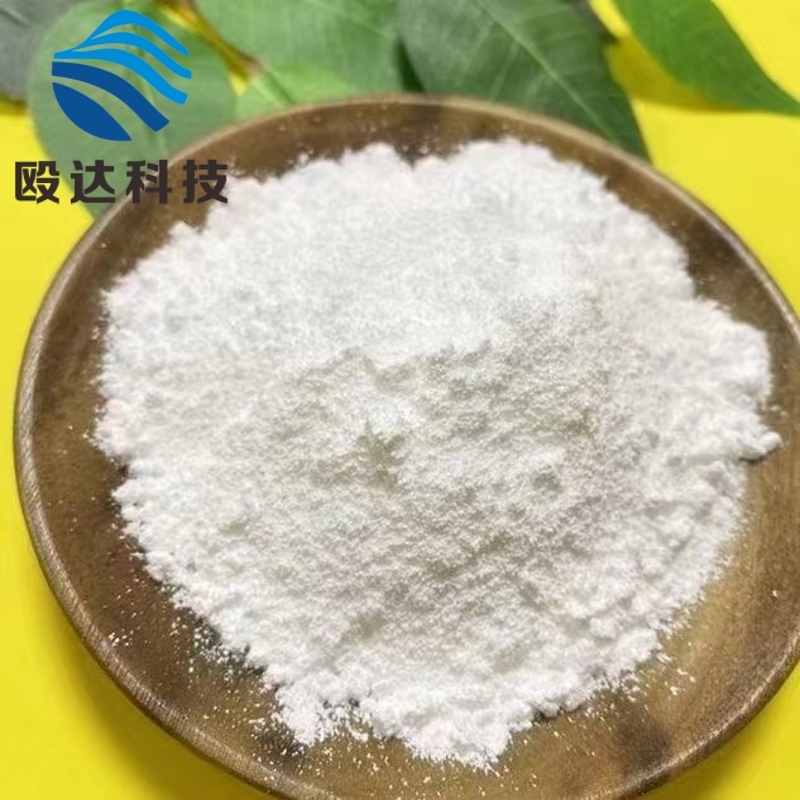A comprehensive review of the future hepatitis C market: Don't be jealous, Gilead will still be far ahead!
-
Last Update: 2014-11-20
-
Source: Internet
-
Author: User
Search more information of high quality chemicals, good prices and reliable suppliers, visit
www.echemi.com
Source: e-medicine Facebook 2014-11-20 in the past decade, whenever you pay attention to Gilead, it always holds the trump card Whether in the field of AIDS or the current field of hepatitis C, Gillette will always lead its rivals and dominate the market Over the years, the company has always been one step ahead of its competitors in the AIDS market, introducing improved treatment drugs It's really impressive Today, in the hepatitis C market, Gillette repeats its story in the AIDS market Gilead had long foreseen that sofosbuvir was a game changing product As early as November 2011, he purchased pharmasett for $11 billion, thus obtaining the drug If you have a good memory, it should be remembered that on the day the deal was announced, Gillette's share price fell 10% because Wall Street thought Gillette was not a good deal But then sofosbuvir was a big success, adding at least $120 billion to Gillette's market value since it went public Sofosbuvir's sales are expected to reach $11 billion in 2014 It is clear that this is a major victory for the company's management Recently, in October 2014, Jared's latest hepatitis C drug, harvoni, was approved by the FDA, pushing the company's hepatitis C drug to a new height Whether it's a fully oral dosage form or an amazing SVR (sustained viral response) data, other competitors are far behind Many competitive products include Pegasys (Pegasus, pegylated interferon α - 2A) and ribavirin, as well as the new drugs incivek, victrelis and olysio which have been launched in recent years, and even the company's own sofosbuvir combined with interferon and ribavirin Now Gillette is working on the latest triple therapy The company has firmly held the top position in the hepatitis C market, rarely talking about the research of competitors For hepatitis C patients, this is a real new life, and there will be newer and better treatment plans in the future Next, we will review the history of hepatitis C and look forward to the future Before sovaldi, hepatitis C drugs were a very competitive field in the world of hepatitis C pharmaceutical companies and biotechnology companies have entered this field and continuously expanded their investment in this field In general, the main targets of hepatitis C virus are NS3, NS5A and NS5B Each target has many drugs and candidate products under development Figure 1: before 2011, the standard treatment for hcv-1 patients was Paroxetine Combined with ribavirin for 48 weeks The side effects of this treatment are very large, including nausea and flu like symptoms, but the effective rate is very low, only 30-40% In 2011, HCV NS3A protease inhibitors were approved by FDA, which changed the treatment of hcv-1 patients Such patients can use incivek or boceprivir in combination with paroxysm and ribavirin for 24-48 weeks The SVR rate of hcv-1 patients jumped to 75-80%, but in some patients, such as cirrhosis or HIV infected patients, the efficiency is still very low Incivek is the first of these drugs to rank among the blockbuster drugs, with sales of $1 billion nine months after its launch At the same time, scientists began to study hepatitis C drug cocktail therapy, hoping to combine a variety of treatment mechanisms to improve the efficacy, and found that this method is completely effective In this context, Gillette took the lead in acquiring pharmasett in November 2011 Pharmasett has a drug in development called psi-7977, which later became known as sovaldi After sovaldi went public, the sales volume of incivek fell sharply, and finally fell by 90% In April 2013, a phase II study showed that sovaldi, an NS5B polymerase inhibitor from Gillette, was used in combination with daclatasvir, an NS5A polymerase inhibitor from Bristol Myers Squibb (BMS) The cure rate of sovaldi, an NS5B polymerase inhibitor from Gillette, was astonishingly 100% in hcv-1 patients who had previously failed to be treated with incivek or boceprivir in combination with Pershing and ribavirin For hepatitis C patients, this is indeed a remarkable achievement However, Gillette refused to continue to cooperate with Bristol Myers Squibb because the company's own products are under active research, that is, the scheme of harvoni, sofosbuvir + ledipasivir, which is now on the market Then, in November 2013, Johnson & Johnson's protease inhibitor olysio, in combination with peroxin and ribavirin, was approved by the FDA Some phase II clinical studies have shown that the combination of sovaldi and protease inhibitors, without the use of paroxetine, can be used in hcv-1 patients with an effective rate of up to 99% In the United States, the combination of Johnson & Johnson's olysio and sovaldi has become the first all oral treatment with high cure rate and low side effects The treatment also helped olysio and sovaldi generate nearly $2 billion and more than $8 billion in sales in the first quarter of 2014, respectively The once elevated competition threshold for hepatitis C drugs in October this year, harvoni of Gilead was approved by the FDA, once again improving the treatment of hepatitis C The drug is a combination of sofosbuvir and ledipasivir Clinical research shows that the cure rate of hcv-1 patients can reach 99% after receiving the drug for 8 or 12 weeks In terms of drug cost, the original standard treatment scheme sovaldi + peroxin + ribavirin, 12 weeks, costs US $95000; using harvoni, 12 weeks' cost is similar, US $94500; but if using 8 weeks' harvoni treatment scheme, only US $63000 is needed With harvoni, SVR rates are higher and side effects are less, and patients' compliance is better because they only need to take the drug once a day Such a high threshold has deterred competitors On the eve of harvoni's approval, Bristol Myers Squibb announced that due to the rapid development of hepatitis C drug research, the company decided not to continue to seek FDA approval for daclatasvir + asunaprevir for HCV-1b patients, and withdrew the new drug application (NDA) of NS3 / 4A protease inhibitor asunaprevir from FDA Basically, this means that Bristol Myers Squibb thinks that the combination of daclatasvir / asunaprevir with 85% cure rate can't compete with harvoni of Gillette, so it's decided to wait for the company's triple drug to have better efficacy data In addition, Johnson & Johnson pointed out in its second and third quarter quarterly reports that its sales volume of olysio is expected to decrease significantly due to the introduction of new hepatitis C treatment plans in the market Does this sound familiar? Two years ago, incivek said the same Johnson & Johnson did not release its expected sales of olysio, but said it would continue to work with the health care department and insurance companies to provide olysio for the right patients Some analysts predict that in the future, olysio may reduce its price by 90% or more if it remains competitive Table 1: total cost of mechanism course of HCV SVR rate of drug companies approved by FDA (10000 US dollars) paroxysm / ribavirin Roche multi mechanism 48 weeks 40% 3 incivek / paroxysm / ribavirin vertex NS3 24-48 weeks 75% - 80% 8.6-10.6 victrelis / paroxysm / ribavirin msdon NS3 24-48 weeks 70% - 75% 6.5-9.6 sovaldi / palosine / ribavirin Gilead NS5B 12 weeks 90% 9.4 olysio / palosine / ribavirin Johnson NS3 24-48 weeks 80% 8.6-10.6 harvoni Gilead NS5B / NS5A 8-12 weeks 94-99% 6.3-9.4 sovaldi / olysio Gilead / Johnson NS5B / NS3 12 weeks 93% 15 note: HCV SVR rate is based on initial hcv-1 There was no liver fibrosis or other complications such as HIV Now there is a new direction, harvoni, which sets a high "threshold" for the effectiveness and safety of hepatitis C treatment, so other treatment companies can only look forward to see if there is any place to continue to break through and provide more competitive new treatment programs The answer is: treatment time, higher cure rate of refractory patients, less recurrence rate or no recurrence, and a simple treatment plan suitable for all genotypes In order to test the first question "treatment time", Gillette, mosadon and Bristol Myers Squibb have recently carried out clinical trials In November 2013, the National Institutes of Health (NIH) conducted a study to test several potential drug regimens of Gillette In a small study of 20 patients with advanced hepatitis C (70% genotype 1a, 28% stage 3 liver disease), the treatment regimen included all three mechanisms of drugs At that time, harvoni had not been approved, so the drug combinations tested included sofosbuvir, ledipasivr and gs-9451, an NS3 protease inhibitor under development The efficacy of this triple cocktail drug is amazing After only six weeks of treatment, all 20 patients with hcv-1 in arm C have a SVR4 rate of 100% It is clear that Gilead followed up on this result and carried out a phase II study of this treatment regimen for patients with refractory hepatitis C The study is currently under way These results also give competitors confidence, although very difficult, but there is hope to shorten the treatment time and improve the cure rate Soon after treatment, the HCV load of all patients was lower than lloq (lower limit of quantification) The viral load of group A was still lower than that of lloq 12 weeks after the discontinuation of treatment, 18 of group B 20 and 20 of group C were lower than that of lloq 4 weeks after the discontinuation of treatment Two weeks after discontinuation of treatment, one patient in group B relapsed, and another patient in group B had a svr2 HCV load lower than lloq but a subsequent SVR4 HCV load higher than lloq Figure 2: Gilead's triple drug combination is used for hcv-1 patients After 6 weeks of treatment, SVR reaches 100% Recently, mosadon published the results of phase II study of triple drug c-swift Mk-5172 (protease inhibitor) + mk-8742 (NS5A polymerase inhibitor) + sofosbuvir (NS5B nucleotide polymerase inhibitor) of Gilead is used for initial treatment of hcv-1 Patient It's not surprising that mosadon's treatment plan includes gilled's sofosbuvir Although mk-5172 + mk-8742 basically did not rebound after 12 weeks of treatment, the 8-week treatment plan was unsatisfactory, the SVR rate was 83%, and the recurrence rate was 17%, which was unacceptable However, in the 12 week regimen without ribavirin, the SVR rate was 98% and the recurrence rate was only 2% Table 2: mk-5172 + mk-8742 clinical trial results of c-worth in patients with primary and non fibrosis hcv-1 mk-5172 + mk-8742 (12 weeks) (n = 44) mk-5172 + mk-8742 + ribavirin (12 weeks) (n = 85) mk-5172 + mk-8742 + ribavirin (8 weeks) (n = 30) svr4-24,% (n) 98% (43) 94% (80) 83% (25) without SVR
This article is an English version of an article which is originally in the Chinese language on echemi.com and is provided for information purposes only.
This website makes no representation or warranty of any kind, either expressed or implied, as to the accuracy, completeness ownership or reliability of
the article or any translations thereof. If you have any concerns or complaints relating to the article, please send an email, providing a detailed
description of the concern or complaint, to
service@echemi.com. A staff member will contact you within 5 working days. Once verified, infringing content
will be removed immediately.







